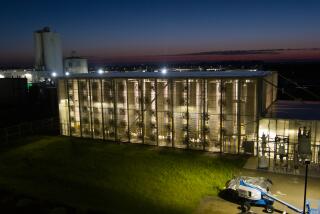USC researchers discover new, cheaper CO2 capture
Researchers at USC, right here in our backyard, have just announced a new, superefficient way to pull CO2 out of the air. And, potentially, out of effluents from smokestacks and other industrial sources. And to then release it again, recycling the capture material over and over.
The secrets? Sand. And plastic.
The new process, detailed in the Journal of the American Chemical Society, claims to have the highest carbon dioxide removal capacity for real-world conditions, where humidity and other factors often hinder common capture methods. This has huge implications for carbon removal, as well as for new carbon products.
“Right now, the short term is that we’re making CO2-free air from this technology. For our applications in fuel cells and batteries and things like that,” says G.K. Surya Prakash, a professor at USC and director of the Lokar Hydrocarbon Research Institute there who is part of the study. “Ultimately, I think that these kinds of materials, if they are developed on a massive scale, it can extract CO2 from point sources like coal-burning power plants, cement plants, breweries and stuff like that.”
Prakash points out that, economically, such large-scale applications are not practical. But maybe soon.
The new process combines fumed silica and polyethylenimine, both commercially available solid materials, to absorb CO2 at room temperature. Then, at 85 degrees Celsius, the CO2 is released again. Typically, that is done with sodium hydroxide or calcium hydroxide, to form carbonates. But this new process absorbs more efficiently and is easy to recycle, requiring only temperature change for capture and release.
The end result may not be sequestered CO2, but rather, new carbon products.
“Everybody says CO2 is a villain. But without CO2, there won’t be life on Earth,” says Prakash. “We believe that CO2 is a fantastic carbon source for mankind. Once we run out of fossil fuels, mankind still needs to make plastics, agrichemicals, fertilizers, all kinds of stuff. For this you need a carbon source. And the best carbon source, in my opinion, is CO2 from the air.”
Another partner in the study is chemistry Nobel laureate George Olah, also at USC.
RELATED:
California wolf is named ‘Journey,’ photo released
Sea Shepherd activist arrested filming cove dolphins
...And the 2011 award for bad climate science goes to...






